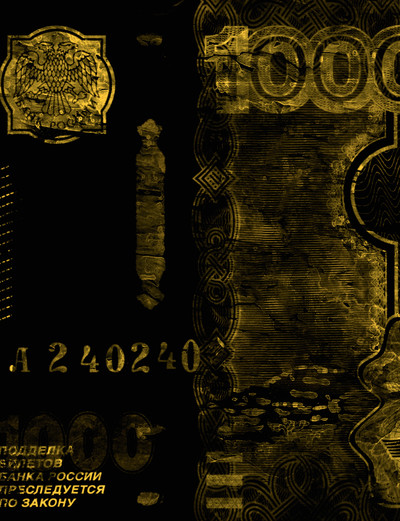Why does Russia’s fashion industry depend on imported goods?
By Miroslava Duma
Illustrations by François Berthoud
Why does Russia’s fashion industry depend on imported goods?

It may be hard to believe today, but fashion and appearance have not historically been an integral part of Russian culture. Seventy years of lean consumption and unpredictable market behaviour after the 1917 revolution made economists all over the world question whether Russia would ever make the Great Leap Forward.
In the times of the Soviet Union, there was nothing in the shops. Literally nothing. No food, no clothing, nothing… The average Russian tovarishch (comrade) was taking home a meagre monthly salary of 120 rubles, and everyone had to play their insignificant part in the anonymous grey mass. The Soviet leaders held tight to their communist ideals. Then, thanks to Gorbachev, Yeltsin and, more importantly, West Siberian oil and gas capacities, over the space of a decade our country be- came the fastest growing economy in Europe.
The modesty of Soviet people was replaced with a wanton desire to buy all the luxury brands, wear them all together at the same time and look like a logo monster. In 1992, as a seven-year-old child, I was in Geneva with my mother and her friend who was wondering why on earth I would want to try on a Baby Dior jacket that didn’t have the logo all over it. ‘What an absolute waste of money!’ she uttered. This perfectly sums up the mentality of Russians in the 1990s.
Predictably, an economic crisis took hold, and Russian consumers were forced to alter their newly formed shopping habits and turn to mid-priced brands for salvation. Suddenly, international companies like Zara and H&M dominated the market, opening stores in Moscow and Saint Petersburg. The Russian market still represents enormous opportunity to international designers. Russia’s recent membership into the World Trade Organization has allowed its retail market to become increasingly open, and now is the right time for foreign brands to pursue expansion here. The downside, however, is that we have yet to create opportunities for our native designers. Unless of course they change citizenship, move to France and start working with Russia from ‘the other side’. The Russian government has still to support young fashion talent. Nothing like the CFDA or the British Fashion Council exists here. There are no grants. There isn’t even a higher-education fashion institute. Despite this, there are many talented designers from Russia, the Ukraine, and Georgia, but unfortunately none of them have the power nor money to overcome Russia’s questionable customs regulations and practices, and consequently none of our designers can deliver on time to international shops. One time, Lane Crawford sent me a Burberry trench to customise for a charity project. Customs called and told me I had to pay 40 per cent tax on the coat; it came to $400. I tried to explain to them that the coat was for a charity project, I had not purchased it for myself, and it would be sent back, to which they replied, ‘Russian customs don’t know the meaning of the word ‘charity’.’
Meanwhile, French, Italian, and American designers are ubiquitous in Russia. The hype surrounding the Antwerp Six has now shifted towards London – Peter Pilotto, Christopher Kane, Erdem, Mary Katrantzou, Meadham Kirchhoff – and to the Asian/American community – Jason Wu, Phillip Lim, Derek Lam, Alexander Wang – but still no one has heard of Russian designers such as Vika Gazinskaya, Ulyana Sergeenko, Alexander Terekhov among others. The ‘Made in Russia’ label could be a great project to invest in – so anybody who is going to conquer the new market should, as Steve Jobs said, ‘Think different.’ For the time being though, the entire fashion industry in Russia depends on imported goods. Russia’s main luxury import monopolist, Mercury, grows bigger and more powerful by the day: it represents more than 700 brands with standalone boutiques including Céline, Chloé, Tom Ford, Lanvin… It also owns Russia’s main historical department stores, TsUM and DLT. Clearly this all demonstrates that Russia’s buying capacity remains extremely high.
Nonetheless, investors most likely believe that Russia lacks a sustainable economic course. Or perhaps they are frightened and put off by high profile incidents like the trial of Pussy Riot, or the sickening story of Sergei Filin, the Bolshoi Theatre’s artistic director, who was attacked with acid on the streets of Moscow near his home. Still, in spite of its size, power, and riches, Russia is definitely ready for something new, dramatic, and historical in terms of fashion. Maybe a Russian Coco Chanel? I hap- pen to know one, by the way. And she would be a perfect fit for one of the major French fashion houses and could blow our minds.